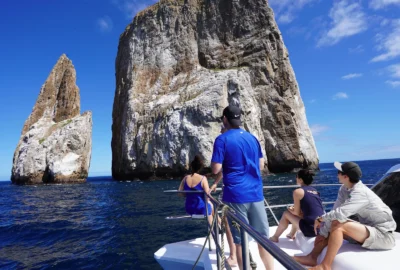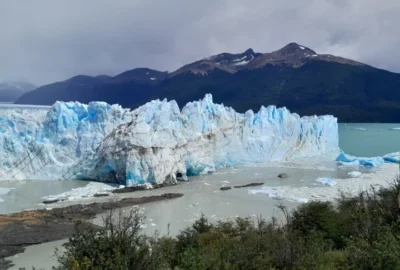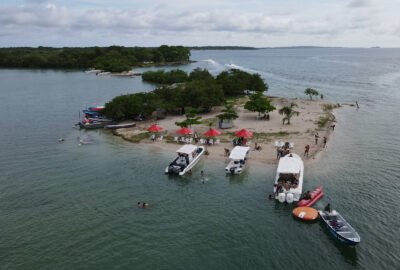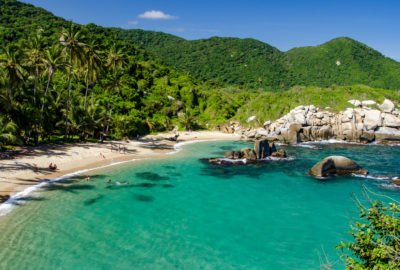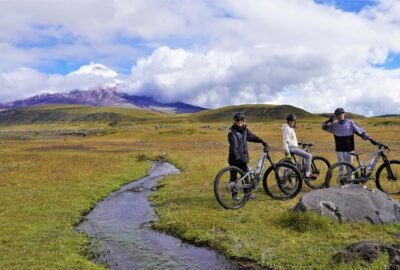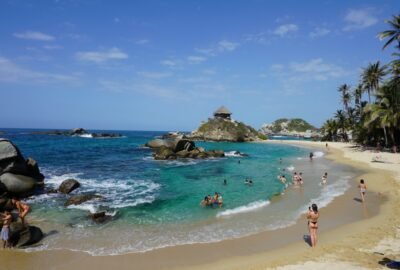10 Iconic Animals of the Galapagos Islands That Will Take Your Breath Away

In a remote corner of the planet, where lava sculpted surreal landscapes and ocean currents converged to create a crucible of life, lie the Galapagos Islands. This volcanic archipelago, famous for inspiring Charles Darwin’s theory of evolution, harbors a collection of extraordinary creatures found nowhere else on Earth. Their isolation and the lack of significant land predators have allowed wildlife to evolve in unique and often remarkably tame ways. Prepare for a virtual journey as we highlight 10 of the most iconic animals of the Galapagos, each with a fascinating story to tell and a beauty that will leave you breathless.
The 10 Iconic Animals:
1. Galapagos Giant Tortoise ( Chelonoidis nigra )
- Location: The various subspecies of giant tortoises are distributed across several islands of the archipelago. For example, saddle-backed tortoises are more common on arid islands like Española and Pinzón, where ground-level food is scarce, forcing them to stretch their necks to reach higher vegetation. Dome-shaped tortoises, like those found in the humid highlands of Santa Cruz and Isabela, have access to abundant low-lying vegetation.
- Natural History: Imposing giants that can live for over 100 years (some even exceeding 150), Galapagos giant tortoises are the largest living land tortoises in the world. Their diet is primarily herbivorous, consuming a variety of vegetation including grasses, leaves, fallen fruits, and even the spines of prickly pear cacti. The distinctive shape of their shells, which varies significantly between islands, is a remarkable adaptation to the different environmental conditions and food sources available on each. Sadly, many subspecies have been driven to the brink of extinction due to historic hunting and the introduction of invasive species, but ongoing conservation efforts are crucial for their survival.

Beyond Their Size: 5 Surprising Facts About Galapagos Tortoises
Exceptional Longevity: Galapagos giant tortoises are famous for their long lifespan. They can live for more than 100 years, and some have exceeded 150 years, making them one of the longest-living vertebrates on the planet.
Variety of Shell Shapes: They exhibit a remarkable variety in their shell shapes. These differences are related to the island they inhabit and the type of vegetation available. Some have “saddle-backed” shells, adapted for reaching high vegetation, while others have “dome-shaped” shells.
Impressive Size: They are the largest living tortoises in the world. Adult males can weigh over 250 kg (550 lbs) and measure over 1.2 meters (4 feet) long.
Adaptations to the Island Environment: They have developed unique adaptations to survive in the Galapagos Islands. For example, they can go for long periods without food or water, storing water in their necks and obtaining moisture from the food they eat.
Ecological Importance: They play a crucial role in the Galapagos ecosystem. As they move, they disperse seeds and help shape the vegetation of the islands. Their trails are also used by other animals.
2. Marine Iguana ( Amblyrhynchus cristatus )
- Location: These fascinating creatures are endemic to the Galapagos and can be observed on almost every island in the archipelago. They are a common sight on both the wave-battered rocky shores and the tranquil sandy beaches, often congregating in large groups to bask in the sun.
- Natural History: The marine iguana holds the extraordinary title of being the only modern lizard in the world that forages in the sea. Their diet consists almost exclusively of marine algae, which they graze on submerged rocks during their dives. To facilitate this aquatic feat, they have developed remarkable adaptations, including a flattened tail that acts as a powerful oar and the ability to slow their heart rate to conserve oxygen in cold waters. After their forays into the ocean, they often congregate on the dark volcanic rocks to absorb the sun’s heat, a behavior essential for regulating their body temperature.
Ocean Lizards: 5 Amazing Secrets of the Marine Iguana

Unique Swimming Ability: Marine iguanas are the only lizards in the world that forage in the ocean. They dive into the cold waters to feed on algae, a behavior that is unique among reptiles.
Salt Excretion: To cope with the high salt intake from seawater, they have specialized nasal glands that they use to sneeze out excess salt.
Dark Coloration: Their dark black or grayish coloration helps them absorb heat from the sun after swimming in the cold ocean waters.
Size Variation: The size of marine iguanas varies significantly between islands. This is believed to be an adaptation to food availability and water temperature.
Social Behavior: They are often seen basking in large groups on the rocks to regulate their body temperature.
3. Darwin's Finches (Genus Geospiza and others)
- Location: These small birds are found scattered throughout the archipelago, with the distribution of each of the approximately 15 species varying depending on the islands and the specific ecological niches they occupy.
- Natural History: Darwin’s finches are perhaps the most iconic example of adaptive radiation, the process by which a single ancestral species evolves into a diversity of forms that are adapted to different food sources and ecological roles. It was the observation of the subtle yet significant differences in the size and shape of their beaks between the various islands that provided one of the key inspirations for Charles Darwin’s theory of natural selection. From the ground finches with robust beaks for crushing large seeds to the cactus finches with long, pointed beaks for reaching nectar and larvae within cactus flowers, and the peculiar vampire finch that occasionally feeds on the blood of other birds, each species demonstrates an astonishing adaptation to its specific environment.

Darwin’s Legacy: 5 Fascinating Facts About Galapagos Finches
Beak Diversity: The most famous characteristic of Darwin’s finches is the incredible variety in their beak shapes and sizes. These adaptations are directly related to the different food sources available on the islands, such as seeds, insects, flowers, and even cactus fruits.
Adaptive Radiation: Darwin’s finches are a classic example of adaptive radiation, a process where a single ancestral species diversifies into a variety of forms adapted to different ecological niches. This rapid evolution is what makes them so scientifically important.
Dietary Specialization: Each finch species has evolved a beak shape optimized for a particular diet. For example, finches with large, strong beaks can crack open hard seeds, while those with long, thin beaks are better suited for probing flowers for nectar or catching insects.
Rapid Evolution: Scientists have observed evolution occurring in Darwin’s finches over relatively short periods. Changes in beak size and shape can happen in response to environmental changes, such as droughts that alter food availability.
Hybridization: Different finch species can sometimes interbreed, producing hybrid offspring. This hybridization can lead to the formation of new species or the merging of existing ones, further contributing to the complexity and evolutionary dynamism of the finch populations.
4. Blue-Footed Booby ( Sula nebouxii )
- Location: These charismatic seabirds can be observed on several Galapagos islands, with particularly large and spectacular breeding colonies on islands like Española and North Seymour.
- Natural History: The blue-footed booby is famous for the striking bright blue color of its feet, a sexually selected trait that plays a crucial role in their elaborate courtship rituals. Males with more intensely blue feet are generally more attractive to females. Their fishing technique is equally impressive: they plunge-dive from considerable heights into the ocean to catch fish. They are monogamous birds, and both parents participate in incubating the eggs and caring for the chicks in nests built directly on the ground.
Fancy Footwork: 5 Fascinating Facts About Blue-Footed Boobies
Distinctive Blue Feet: The most iconic feature of the Blue-Footed Booby is, of course, their bright blue feet! These feet play a crucial role in their courtship rituals. The brighter the blue, the more attractive the booby is to potential mates.

Elaborate Mating Dance: Blue-footed boobies perform a unique and elaborate mating dance to show off their feet. The male will high-step, lift his feet, and present them to the female. This dance also includes bowing, neck stretching, and bill-circling.
Specialized Diving: These birds are excellent divers. They plunge into the ocean from significant heights to catch fish. Their streamlined bodies and specialized air sacs help them withstand the impact of hitting the water.
Monogamous Nature: Blue-footed boobies are generally monogamous, meaning they typically mate with the same partner for several breeding seasons. They share the responsibilities of incubating the eggs and raising their chicks.
Nest on Land: Unlike some seabirds that nest in trees, blue-footed boobies nest on the ground. They create simple nests on the rocky or sandy ground of the Galapagos Islands.
5. Galapagos Sea Lion ( Zalophus wollebaeki )
- Location: These playful marine mammals are found on all islands of the Galapagos archipelago. They are a constant and welcome presence on sandy shores, rocky coastlines, and even on harbor docks, often lounging nonchalantly or interacting with curious visitors.
- Natural History: Galapagos sea lions are known for their curious, playful, and often remarkably tame nature. Their diet consists primarily of fish and squid that they hunt in the rich surrounding waters. They live in social colonies led by territorial bulls that fiercely defend their harems of females. The pups are incredibly endearing and stay close to their mothers for several months, learning the essential skills for survival. Sadly, despite their apparent abundance, this endemic species is classified as vulnerable due to various environmental threats.
The Galápagos Sea Lion ( Zalophus wollebaeki) is a fascinating creature endemic to the Galápagos Archipelago. Here are 5 interesting facts about them:

They are incredibly social and often unafraid of humans: Unlike some other wildlife, Galápagos sea lions are known for their playful and curious nature around people. You’ll often see them lounging on park benches, docks, and even in the middle of town sidewalks! This lack of fear makes for unique wildlife encounters.
Males are significantly larger than females and develop a prominent forehead bump: Adult male sea lions, known as “bulls,” can weigh up to 250 kg (550 lbs) and are easily recognizable by a large, bony protrusion on their forehead and a thick neck mane. Females, on the other hand, are smaller, typically weighing around 100 kg (220 lbs), and lack these distinct features. This size difference is due to the intense competition among males for breeding rights.
Their diet primarily consists of fish, sardines, and other small marine life found in the Galápagos waters: As skilled swimmers and divers, they hunt in the nutrient-rich coastal waters surrounding the islands. They are opportunistic feeders and will often forage in groups to increase their hunting success.
They have a distinctive loud bark that helps with communication: Sea lions are quite vocal, and their loud, repetitive barking serves various purposes, including establishing territory, communicating between mothers and pups, and signaling during social interactions. Each sea lion’s bark is somewhat unique, allowing individuals to recognize each other.
Pups are born on land and rely entirely on their mothers for milk for several months: Female sea lions typically give birth to a single pup. For the first few weeks, the mother stays close to her pup, nursing it frequently. Even after they start exploring and learning to swim, the pups continue to rely on their mother’s milk for nourishment for up to a year or even longer, forming a strong maternal bond.
6. Frigatebird (Genera Fregata minor and Fregata magnificens)
- Location: Frigatebirds are a common sight in the skies above several Galapagos islands. Significant nesting colonies can be found on islands like Genovesa and North Seymour, where their distinctive red gular sacs stand out during the breeding season.
- Natural History: Frigatebirds are spectacular seabirds known for their remarkable flying ability and a peculiar feeding strategy called kleptoparasitism. Male frigatebirds develop an impressive bright red gular sac that they inflate like a balloon during the mating season to attract females. Despite their large wingspan, they have non-waterproof feathers, forcing them to avoid landing directly on the water. Instead, they are often seen stealing fish from other seabirds in mid-air, hence their nickname “pirate birds.” Two main species are found in the Galapagos: the Lesser Frigatebird (Fregata minor) and the Magnificent Frigatebird (Fregata magnificens), distinguished by subtle differences in size and plumage..

Magnificent Frigates: 5 Amazing Facts About Galapagos Pirates of the Sky
Inflated Gular Sac: Male frigatebirds have a vibrant red gular sac (a throat pouch) that they inflate like a balloon during mating displays to attract females. This is a truly spectacular sight!
Aerial Mastery: Frigatebirds are incredibly agile and skilled fliers. They have the largest wingspan-to-body weight ratio of any bird, allowing them to soar effortlessly for hours and even days at a time.
Kleptoparasitism: Frigatebirds are known for their kleptoparasitic behavior, meaning they often steal food from other birds. They will harass other seabirds until they drop their catch, which the frigatebird then snatches up. This is why they’re sometimes called “pirate birds.”
Limited Ability to Swim: Despite being seabirds, frigatebirds have a limited ability to swim. Their feathers are not very waterproof, so they avoid landing on the water.
Long Parental Care: Frigatebirds have one of the longest periods of parental care among birds. The chick is fed and cared for by its parents for many months, sometimes even longer than a year.
7. Galapagos Flamingo ( Phoenicopterus ruber glyphorhynchus )
- Location: Flamingos can be observed in brackish lagoons on several islands, with Floreana, Isabela, and Rabida being some of the more common locations.
- Natural History: The Galapagos flamingo is a subspecies of the American flamingo, although it tends to be slightly smaller and a more intense pink in color due to its diet rich in crustaceans containing carotenoids. These elegant birds feed by filtering water with their specialized bills, trapping small invertebrates and algae. They live in colonies and build mud nests on the shores of the saline lagoons. Their distinctive color and group feeding behavior make them a striking sight.
Pink Perfection: 5 Fascinating Facts About Galapagos Flamingos
Intense Pink Color: Galapagos flamingos are known for their vibrant, deep pink coloration, which is more intense than that of other flamingo species. This vivid hue comes from their diet, rich in carotenoid-containing algae and crustaceans.

Specialized Bills: Flamingos have unique, specialized bills that they use for filter-feeding. They hold their bills upside down in the water and use their tongues to pump water in and out, filtering out small food particles like algae and brine shrimp.
Wading Birds: They are wading birds, meaning they live and feed in shallow water. You’ll often find them in the saline lagoons and brackish waters of the Galapagos Islands.
Colonial Nesters: Galapagos flamingos are colonial nesters, meaning they breed in groups. They build mud-mound nests to lay their eggs, which helps protect them from flooding and temperature extremes.
Relatively Small Size: Compared to some other flamingo species, Galapagos flamingos tend to be slightly smaller in size.
8. Flightless Cormorant ( Nannopterum harrisi )
- Location: This unique cormorant is an endemic treasure found exclusively on the western islands of Isabela and Fernandina, where the cold, nutrient-rich ocean currents provide an abundant food source.
- Natural History: The Galapagos flightless cormorant is a fascinating example of how life evolves in isolation. In the absence of significant land predators and with a rich supply of fish in the coastal waters, these cormorants gradually lost the ability to fly, investing that energy into the development of strong, webbed feet and a streamlined body, making them exceptional divers. They feed primarily on fish and eels that they catch in swift and efficient dives. Their population is relatively small and considered a vulnerable species, highlighting the importance of conservation efforts in their limited habitat.
Galapagos Oddity: 5 Fascinating Facts About the Flightless Cormorant

Lost the Ability to Fly: The most striking feature of the Galapagos Flightless Cormorant is that, as the name suggests, it has lost the ability to fly. Its wings are small and stubby, and it lacks the keel bone (sternum) needed to support the powerful flight muscles of other cormorants.
Adapted for Diving: While they can’t fly, they are excellent swimmers and divers. Their strong legs and webbed feet propel them through the water as they hunt for fish, eels, and other marine creatures.
Endemic to Galapagos: They are found only on the islands of Isabela and Fernandina in the Galapagos Archipelago, making them endemic to this unique location.
Larger Size: Compared to their flying relatives, flightless cormorants are larger in size, which is thought to be an adaptation related to their diving lifestyle.
Reduced Predation: The loss of flight is believed to be an evolutionary adaptation to the Galapagos environment, where there were historically fewer land predators, making flight less necessary for survival.
9. Galapagos Land Iguana (Genus Conolophus)
- Location: Land iguanas are found on several islands of the archipelago, with different species and subspecies adapted to the specific conditions of each island (e.g., Conolophus subcristatus on Santa Cruz, South Plaza, etc.; Conolophus pallidus on Santa Fe; Conolophus marthae on northern Isabela).
- Natural History: These imposing terrestrial lizards can reach up to a meter in length and are characterized by their yellow to brownish skin and dorsal spines. They are primarily herbivorous, feeding on leaves, flowers, fruits, and especially the pads of prickly pear cacti, whose spines they handle with dexterity. Land iguanas play an important role in seed dispersal. They often bask in the sun to regulate their body temperature and dig burrows for shelter from the heat and during the night. Some species are listed as vulnerable or endangered due to habitat loss and the introduction of predators.
Desert Dragons: 5 Fascinating Facts About Galapagos Land Iguanas

Terrestrial Herbivores: Unlike their marine cousins, Galapagos land iguanas are primarily terrestrial herbivores. They mainly feed on the prickly pear cactus, using their blunt snouts and strong claws to navigate the spiny plants.
Heat Regulation: They are ectotherms (cold-blooded), so they rely on the sun to regulate their body temperature. You’ll often see them basking in the sun to warm up and then seeking shade to cool down.
Symbiotic Relationship with Finches: Land iguanas sometimes have a symbiotic relationship with Darwin’s finches. The finches will perch on the iguanas and eat ticks and other parasites from their skin.
Relatively Large Size: They are relatively large lizards, with some individuals reaching lengths of over a meter (3 feet) and weighing up to 15 kilograms (33 pounds).
Long Lifespan: Like the giant tortoises, Galapagos land iguanas are known for their long lifespan, with some individuals living for 50 years or more.
10. Green Sea Turtle ( Chelonia mydas agassizii )
- Location: Green sea turtles are found in the waters around the entire Galapagos archipelago. The sandy beaches of several islands, including Española, Fernandina, and Isabela, are important nesting sites for these turtles.
- Natural History: The Galapagos green sea turtle is a subspecies distinguished by its darker shell compared to other populations. They are herbivorous in their adult stage, feeding mainly on seagrasses and algae. They undertake long migrations to reproduce, with females returning to the same beaches where they were born to lay their eggs. They deposit several clutches of eggs during the nesting season. The hatchlings, upon emerging, face numerous dangers on their journey to the ocean. Green sea turtles are an endangered species worldwide due to bycatch in fishing gear, degradation of nesting habitat, and pollution.

Ancient Mariners: 5 Amazing Facts About Galapagos Green Sea Turtles
Herbivorous Adults: Unlike many sea turtle species, adult Green Sea Turtles are primarily herbivores. They graze on seagrass and algae in shallow coastal waters.
Large Migrations: Green Sea Turtles are known for their long migrations. While those in the Galapagos may not migrate as far as some populations, they do move between feeding and nesting sites.
Communal Nesting: Female Green Sea Turtles come ashore to nest on sandy beaches. They often nest in large groups, sometimes creating a spectacular sight.
Temperature-Dependent Sex Determination: The sex of a Green Sea Turtle hatchling is determined by the temperature of the sand in which the eggs incubate. Warmer temperatures produce more females, while cooler temperatures produce more males.
Vulnerable Species: Green Sea Turtles are classified as endangered. They face threats such as habitat destruction, entanglement in fishing gear, and climate change.
As a guide who has had the privilege of exploring every corner of these enchanted islands for years, I can tell you with certainty that the Galapagos Islands are a destination that transforms the soul. These 10 iconic animals we’ve explored today are just a small glimpse of the evolutionary spectacle that awaits in this unique corner of the planet. I’ve witnessed countless times the majesty of the giant tortoises on their slow but steady journey, the peculiar aquatic dance of the marine iguanas, and the astonishing diversity of Darwin’s finches, each a testament to the incredible adaptability of life.
I’ve navigated alongside the playful sea lions, admired the inflated gular sac of the frigatebirds in full courtship display, and marveled at the tenacity of the flightless cormorant in its underwater pursuit. Even the sight of an equatorial penguin defying the tropical heat remains a reminder of this place’s singularity. And now, with the elegant presence of the flamingos in the salt lagoons, the imposing calm of the land iguanas in their arid territories, and the serene passage of the green sea turtles in our oceans, the richness of the Galapagos expands even further.
Believe me, there’s nothing quite like witnessing these animals in their natural habitat, interacting with their environment in a way that’s only possible here. The feeling of being so close to wildlife, without the fear they often exhibit elsewhere, is truly special.
That’s why, with all the passion of a guide who deeply loves these islands, I invite you to live this unique experience. At Activexpedition, we’ve designed journeys that will take you to the heart of this natural paradise, where you can witness these evolutionary wonders firsthand. Allow us to show you the magic of the Galapagos, guide you through unforgettable encounters, and share with you the fascinating story of each creature.
Come join me in discovering the Galapagos Islands! Visit Galapagos Islands or contact us so we can plan the adventure of a lifetime together.
Activexpedition
Related tours:
Sustainable Travel Tips with Activexpedition
At Activexpedition, we believe in the power of sustainable travel to create positive change in the world. Our commitment to responsible tourism drives us to provide travelers with experiences that not only inspire but also respect the environment and local communities. Here are some tips for sustainable travel in our tours:
1. Choose eco-friendly accommodations:
Opt for accommodations that prioritize sustainability, such as eco-lodges, hotels with green certifications, or locally-owned guesthouses that support the community.
2. Respect local cultures and traditions:
Embrace the customs and traditions of the destinations you visit. Learn about the local culture, support artisans and small businesses, and be mindful of cultural norms.
3. Minimize plastic waste:
Bring a reusable water bottle, refill it from filtered water stations or with purified water, and say no to single-use plastics. ActiveXpedition encourages travelers to participate in beach clean-ups and environmental conservation efforts.
4. Support local guides and businesses:
Choose tours that employ local guides and support community-based tourism initiatives. This ensures that the economic benefits of tourism directly benefit the local population.
5. Reduce carbon footprint:
Opt for sustainable transportation options, such as walking, cycling, or using public transportation whenever possible. ActiveXpedition’s tours prioritize eco-friendly transportation and offset the carbon emissions of our travel activities.
6. Leave no trace:
Follow the principles of “Leave No Trace” by minimizing your impact on natural areas. Respect wildlife, stay on designated trails, and dispose of waste responsibly.
7. Educate yourself and others:
Engage in learning experiences about environmental conservation, wildlife protection, and sustainable practices. Share your knowledge with fellow travelers to promote responsible tourism.
By following these sustainable travel tips in Activexpedition’s tours, you can contribute to the preservation of natural and cultural heritage while creating meaningful connections with the destinations you explore. Together, we can make a positive impact on the planet through responsible and sustainable travel.
Activexpedition
Related tours:
Trekking Ecuador’s Volcanoes
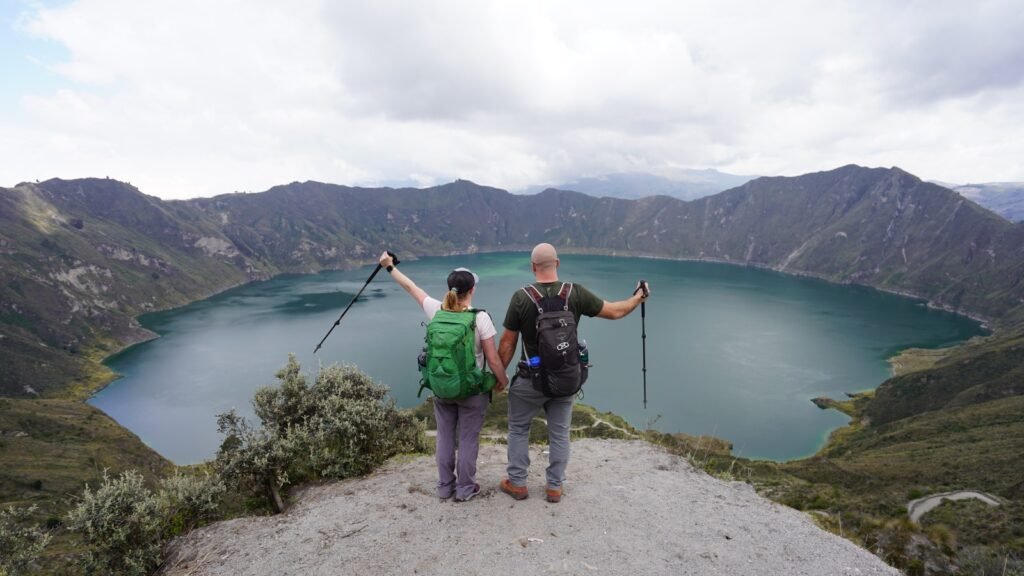
Welcome to our blog about trekking Ecuador volcanoes expeditions! In this blog, we aim to provide you with comprehensive information and insights into the thrilling world of trekking and exploring the stunning volcanoes of Ecuador. From the towering peaks of Chimborazo to the majestic Cotopaxi, Ecuador offers a unique and awe-inspiring experience for adventurous trekkers. Join us as we delve into the details of these expeditions, share personal stories, and provide tips to help you make the most of your journey.
Tips and Recommendations:
- Research and choose a reputable tour operator or guide for your trekking expedition.
- Acclimatize properly before attempting high-altitude treks to minimize the risk of altitude sickness.
- Pack appropriate gear, including warm clothing, sturdy hiking boots, and essential camping equipment.
- Stay hydrated and carry enough water during your trek to combat the effects of high altitude.
- Train physically by engaging in cardiovascular exercises and hiking to prepare your body for the demands of trekking at high altitudes.
- Respect the environment and follow the principles of Leave No Trace to preserve the natural beauty of the volcanoes.
Section 1: Exploring the Volcanic Landscape:
In this section, we will take you on a virtual journey through Ecuador’s volcanic landscape. We’ll provide detailed descriptions of the most iconic volcanoes, including Cotopaxi, Chimborazo, Tungurahua, and more. Learn about their geological history, unique features, and the challenges they pose to trekkers. Get ready to be mesmerized by the breathtaking scenery and learn about the fascinating volcanic activity that has shaped Ecuador’s landscape.
Cotopaxi Volcano
Trekking on the slopes of Cotopaxi Volcano is an extraordinary adventure that combines stunning natural beauty with a fascinating geological history. This stratovolcano, located in the Andes of Ecuador, is known for its perfect cone shape and its status as one of the world’s highest active volcanoes.
Cotopaxi’s geological story begins with its formation millions of years ago, as the result of subduction, where the Nazca Plate slides beneath the South American Plate. The volcanic activity in the region has contributed to the creation of the Andes mountain range, with Cotopaxi being a prominent feature.
During your trek, you’ll witness the remnants of past eruptions in the form of ancient lava flows and ash layers that have shaped the landscape. The volcano’s composition consists of alternating layers of lava, ash, and pyroclastic materials, providing a glimpse into the volcanic processes that have occurred over time.
As you hike higher, you’ll notice the gradual change in vegetation, transitioning from lush forests to alpine meadows and eventually barren rocky slopes. Cotopaxi’s icy glaciers, such as the impressive Glacier de Cotopaxi, are a testament to the volcano’s glacial activity, which has sculpted the surrounding landscape.
While trekking, it’s important to be mindful of Cotopaxi’s active nature. The volcano has experienced multiple eruptions throughout history, with the most recent eruption occurring in 2015. This ongoing volcanic activity adds an element of excitement and wonder to your trek, as you witness the power of nature up close.
Tungurahua Volcano
Trekking on Tungurahua Volcano offers a unique opportunity to explore the geological wonders created by this active stratovolcano. Located in the Ecuadorian Andes, Tungurahua’s name translates to “Throat of Fire” in the local indigenous language, reflecting its fiery nature and fascinating history.
Tungurahua’s geological formation is the result of the same subduction process that formed the Andes. The volcano is characterized by its steep slopes, rocky outcrops, and a prominent crater at its summit. Throughout its history, Tungurahua has experienced frequent eruptions, with notable activity occurring in recent decades.
The trek to Tungurahua takes you through diverse landscapes that showcase the volcano’s geological diversity. As you ascend, you’ll traverse lush valleys, where volcanic ash and debris have enriched the soil, supporting a vibrant ecosystem of plants and wildlife.
The volcano’s eruptive history is evidenced by the presence of lava flows and pyroclastic deposits along the trekking route. You may encounter volcanic rocks and formations that have been shaped by explosive eruptions and subsequent erosion, providing a glimpse into Tungurahua’s dynamic geological past.
Trekking on Tungurahua is an opportunity to witness the volcano’s active nature firsthand. While the volcano has been relatively calm in recent years, volcanic fumaroles and occasional rumblings serve as reminders of its potential for eruption, adding an element of excitement and adventure to your journey.
Chimborazo Volcano
Embarking on a trekking expedition to Chimborazo Volcano unveils a geological marvel that stands as a testament to the Earth’s ancient tectonic forces. Located in the Andes of Ecuador, Chimborazo is not only the country’s tallest peak but also the highest point on the Earth’s equatorial bulge.
Chimborazo’s geological origins lie in the subduction zone, where the Nazca Plate collides with the South American Plate. The gradual movement and collision of these plates have uplifted the Andes mountain range, resulting in the majestic peaks of Chimborazo.
As you embark on your trek, you’ll traverse a diverse range of geological formations. The lower slopes of Chimborazo are characterized by verdant valleys and grazing lands, showcasing the volcanic ash and fertile soils that have been deposited over time.
As you ascend higher, the landscape transitions to rocky terrain, with steep slopes and glacial features. The summit of Chimborazo is home to a massive ice cap, composed of glaciers that have sculpted the mountain over centuries. These glaciers are remnants of past volcanic activity and are crucial indicators of the mountain’s geological processes.
Trekking on Chimborazo offers a unique opportunity to witness the effects of glaciation and erosion on the volcanic landscape. You may encounter glacial moraines, erratic boulders, and U-shaped valleys, all of which are evidence of the powerful forces that have shaped the mountain.
While Chimborazo is currently considered dormant, its geological history is marked by several eruptions. The volcano’s asymmetrical shape and the remnants of past volcanic activity make it a captivating destination for trekking enthusiasts and geology enthusiasts alike.
Tips and Recommendations:
- Check the latest volcanic activity reports and consult local authorities before embarking on your trek to ensure safety.
- Be prepared for varying weather conditions, as mountain weather can be unpredictable. Carry layers of clothing to adjust accordingly.
- Take breaks during your trek to appreciate the stunning views and give your body time to adjust to the altitude.
- Hire a knowledgeable guide who can provide insights into the geological and cultural significance of the volcanoes.
- Capture your memories with a good quality camera and share your experiences on social media to inspire others.
Section 2: Trekking Routes and Itineraries:
In this section, we will explore different trekking routes and itineraries for Ecuador’s volcanoes. Whether you are a seasoned trekker looking for a challenging multi-day expedition or a beginner seeking a shorter trek, we have you covered. We’ll provide detailed information on popular routes, such as the Quilotoa Loop, the Avenue of the Volcanoes, and the Cotopaxi National Park circuit. Discover the unique landscapes, diverse flora and fauna, and cultural highlights along each route.
The Avenue of Volcanoes in Ecuador is a popular trekking destination that offers a unique and unforgettable experience. This trekking adventure takes you through stunning volcanic landscapes, diverse ecosystems, and charming Andean villages. The itinerary ideas include a classic trek that explores the Cotopaxi, Tungurahua, and Chimborazo volcanoes, as well as a loop trek that incorporates the Quilotoa Crater Lake. Along the way, trekkers can witness the geological wonders of active and dormant volcanoes, hike through picturesque valleys, and immerse themselves in the rich cultural heritage of the region. Whether you choose the classic trek or the loop trek, the Avenue of Volcanoes guarantees breathtaking views, challenging terrain, and a truly memorable journey.
Tips and Recommendations:
- Plan your itinerary in advance, considering factors such as the length of the trek, difficulty level, and available accommodations.
- Prioritize safety by choosing well-marked trails and avoiding areas with high volcanic activity.
- Carry a map, compass, and GPS device to navigate the trails effectively.
- Pack lightweight and nutritious snacks to fuel your energy during the trek.
- Engage with local communities along the trekking routes to learn about their customs and traditions.
Section 3: Preparation and Safety:
In this section, we will provide you with essential tips and recommendations to ensure a safe and successful trekking experience. Learn about the necessary equipment, physical preparation, and safety precautions required for trekking Ecuador’s volcanoes. We’ll cover topics such as altitude acclimatization, first aid, emergency protocols, and the importance of hiring experienced guides.
Tips and Recommendations:
- Consult with your doctor before attempting high-altitude treks, especially if you have any pre-existing medical conditions.
- Invest in high-quality trekking gear, including a sturdy backpack, waterproof clothing, and a reliable sleeping bag.
- Carry a comprehensive first aid kit that includes altitude sickness medication, blister care, and basic medical supplies.
- Familiarize yourself with the signs and symptoms of altitude sickness and know when to descend or seek medical assistance.
- Follow the guidance of your guide or tour operator regarding safety protocols and emergency procedures.
Conclusion:
As we conclude this blog about trekking Ecuador volcanoes expeditions, we hope you feel inspired to embark on your own adventure to explore these remarkable natural wonders. Remember to plan well, prioritize safety, and embrace the challenges and rewards that await you. Ecuador’s volcanoes offer a unique opportunity to connect with nature, push your limits, and create lifelong memories. So lace up your hiking boots, pack your backpack, and get ready for an unforgettable journey through the land of volcanoes!
Tips and Recommendations:
- Respect the local culture and customs of the communities you encounter during your trek.
- Leave the trails and campsites as you found them, practicing responsible tourism.
- Capture the beauty of the volcanoes through photography, but remember to be present and experience the moment without being overly focused on capturing the perfect shot.
- Share your experiences and photographs responsibly on social media, promoting sustainable and respectful tourism practices.
- Reflect upon your journey and consider the impact it has had on you, both physically and mentally.
Remember, trekking Ecuador’s volcanoes is an adventure that requires careful planning, physical preparation, and a deep respect for nature. With the right mindset, gear, and guidance, you can embark on an incredible journey that will leave you with lasting memories and a profound appreciation for the natural wonders of Ecuador. So, get ready to conquer the volcanoes, immerse yourself in their beauty, and embark on the adventure of a lifetime!
Activexpedition
Related tours: Trekking
The Ultimate Guide to Multisport Tours in Colombia: Unleash Your Adventurous Spirit with Activexpedition
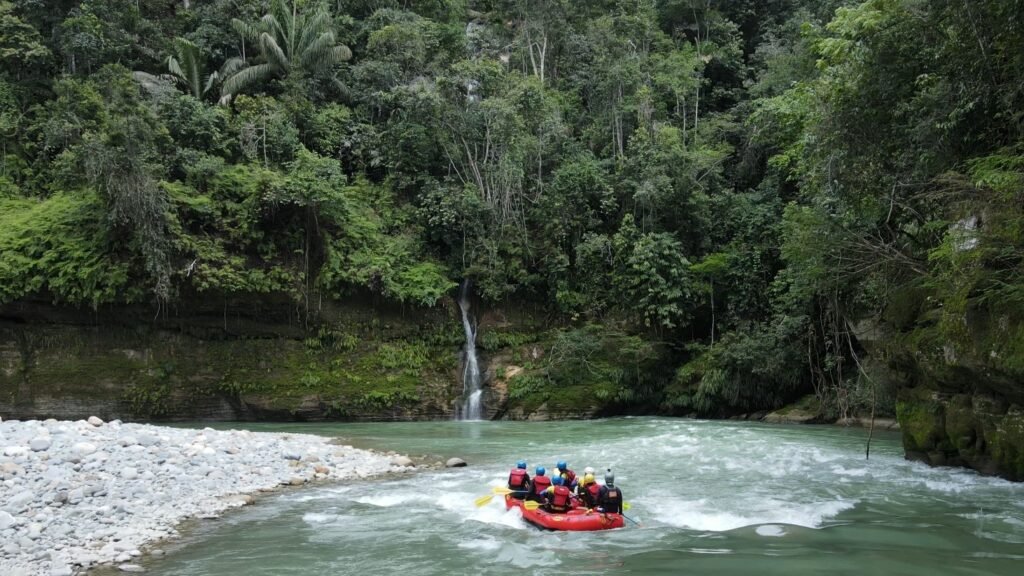
Welcome to Activexpedition’s comprehensive blog and guide to multisport tours in Colombia. Prepare to embark on an extraordinary adventure filled with thrilling activities such as biking, rafting, ebiking, kayaking, snorkeling, diving, trekking, mountain biking (MTB), canyoning, and much more. Join us as we explore the diverse destinations and experiences that make Colombia the ultimate playground for outdoor enthusiasts and adrenaline junkies.
1: Unveiling Colombia's Multisport Paradise In this chapter, we delve into Colombia's stunning landscapes and highlight the top destinations for multisport tours. From the lush coffee region of Salento to the majestic peaks of the Sierra Nevada, we'll guide you through each destination's unique offerings, including the best trails, waterways, and hidden gems. Get ready to immerse yourself in Colombia's natural wonders.
2: Conquering the Trails: Biking and MTB Adventures Discover Colombia's breathtaking scenery on two wheels. In this chapter, we'll introduce you to the best biking and mountain biking routes across the country. Whether you're a road cycling enthusiast or a mountain biking daredevil, we've got you covered. Explore the challenging trails of Cocora Valley, pedal through the vibrant streets of Bogota, or conquer the rugged terrains of Tayrona National Park.
3: Riding the Rapids: Rafting and Kayaking Expeditions Prepare for an adrenaline rush as we navigate Colombia's exhilarating rivers and waterways. Learn about the best rafting and kayaking spots, from the thrilling rapids of the Suarez River to the calm waters of Guatape Lake. Dive into the world of whitewater rafting or glide peacefully along tranquil lakes and mangrove forests. No matter your skill level, Colombia offers unforgettable water adventures.
4: Exploring the Depths: Snorkeling and Diving Escapades Plunge into the crystal-clear waters of Colombia's Caribbean coastline and uncover a vibrant underwater paradise. In this chapter, we'll guide you to the best snorkeling and diving spots, where you can witness the stunning coral reefs and encounter exotic marine life. Swim alongside gentle sea turtles, explore sunken shipwrecks, and discover the magic beneath the waves.
5: Trekking and Beyond: Hiking and Canyoning Thrills Embark on epic trekking adventures and explore Colombia's diverse landscapes on foot in this chapter. From hiking through the mystical Cocora Valley to conquering the challenging trails of El Cocuy National Park, we'll provide you with the ultimate trekking experiences. Additionally, prepare to rappel down stunning waterfalls and navigate through breathtaking canyons with our canyoning guide.
6: Unforgettable Experiences: Ebiking, Horseback Riding, and More In this chapter, we'll introduce you to a range of additional activities that will elevate your multisport adventure. Hop on an ebike and effortlessly explore Colombia's scenic routes. Experience the thrill of horseback riding through coffee plantations or along picturesque beaches. And for the ultimate rush, zip-line through lush rainforests and embrace the full extent of Colombia's natural beauty.
As our guide comes to an end, we hope you feel inspired and ready to delve into the world of multisport tours in Colombia. Activexpedition is your trusted partner in unlocking the country’s hidden treasures, providing unforgettable experiences that combine adventure, natural beauty, and cultural immersion. Get ready to create lifelong memories and push your limits as you embark on a multisport journey through Colombia’s diverse landscapes with Activexpedition.
Activexpedition
Related tours: Colombia Multisport
Exploring the Enchanting Galapagos Islands with Activexpedition: A Perfect Family Getaway

Embarking on a family adventure is an incredible way to create lasting memories and strengthen bonds. If you’re seeking a destination that offers a unique blend of natural wonders, educational experiences, and unforgettable encounters with wildlife, look no further than the Galapagos Islands. And to make your journey even more extraordinary, Activexpedition is here to guide you through this enchanting archipelago. In this blog post, we’ll explore why the Galapagos Islands, together with Activexpedition, is the perfect family travel destination.
1. Discover the Natural Wonders: The Galapagos Islands boast an extraordinary ecosystem, where you can witness Mother Nature at her finest. Imagine snorkeling alongside playful sea lions, observing giant tortoises in their natural habitat, and encountering marine iguanas basking under the sun. Activexpedition's expert guides will lead your family through these breathtaking landscapes, providing insights into the islands' unique flora and fauna.
2. Educational Opportunities: For families with curious minds, the Galapagos Islands offer an unparalleled educational experience. As you explore the diverse landscapes, Activexpedition's naturalist guides will share their wealth of knowledge about the islands' geology, ecology, and conservation efforts. Children will have the opportunity to learn about Charles Darwin's groundbreaking discoveries and witness firsthand the principles of natural selection. It's a hands-on learning experience that will leave a lasting impression.
3. Unforgettable Wildlife Encounters: One of the most captivating aspects of the Galapagos Islands is the abundant and fearless wildlife. Get up close and personal with magnificent creatures such as giant tortoises, blue-footed boobies, and Galapagos penguins. Swim with sea turtles, playful sea lions, and even spot majestic whales during certain seasons. Activexpedition ensures that your family can observe these incredible animals while respecting their natural habitat and conservation efforts.
4. Family-Friendly Activities: Activexpedition understands the importance of tailoring activities to suit the needs and interests of families. Whether it's kayaking, snorkeling, or hiking, there are activities suitable for all ages and fitness levels. Explore volcanic landscapes, visit pristine beaches, and engage in interactive learning experiences that will captivate the whole family.
5. Sustainable Tourism: Preserving the fragile ecosystem of the Galapagos Islands is of utmost importance. Activexpedition is committed to sustainable tourism practices, ensuring minimal impact on the environment. By choosing Activexpedition, you can rest assured that your family's adventure contributes to the preservation of this UNESCO World Heritage site for future generations to enjoy.
Traveling to the Galapagos Islands with Activexpedition is a unique opportunity for families to immerse themselves in the wonders of nature and embark on a transformative journey. From educational experiences to wildlife encounters, this extraordinary destination offers something for everyone.
So, pack your bags, gather your loved ones, and prepare for an unforgettable family adventure in the Galapagos Islands with Activexpedition.
Activexpedition
Related tours: Family tours
Riding the Fiery Trails: Exploring Ecuador’s Avenue of Volcanoes on Two Wheels

Welcome to our blog, where we invite you to embark on an exhilarating journey through Ecuador’s Avenue of Volcanoes. Nestled amidst the awe-inspiring Andes mountain range, this scenic route offers a cyclist’s paradise like no other. Join us as we pedal through a land of breathtaking landscapes, towering volcanoes, and vibrant cultures, all while immersing ourselves in the rich history and natural wonders that define this remarkable region.
1. Unveiling the Avenue of Volcanoes In this section, we will delve into the enchanting history and geography of the Avenue of Volcanoes. We'll introduce you to the awe-inspiring volcanic peaks that line this ancient route, including Cotopaxi, Chimborazo, and Tungurahua. We'll explore the geological wonders that have shaped this region, from lava flows to crater lakes, and unveil the cultural significance these towering giants hold for the indigenous communities that call this place home.
2. The Ultimate Biking Adventure Get ready to saddle up and feel the wind in your hair as we dive into the heart-pumping world of biking in the Avenue of Volcanoes. From seasoned cyclists to casual riders, we'll provide tips, tricks, and recommendations for everyone looking to conquer this thrilling terrain. Discover the best routes, whether you're seeking a leisurely ride through charming Andean villages or an adrenaline-fueled descent down winding mountain trails. We'll cover everything from bike rentals and safety precautions to must-see pit stops and hidden gems along the way.
3. Exploring Nature's Masterpieces Prepare to be captivated by the stunning natural beauty that surrounds you as you cycle through the Avenue of Volcanoes. We'll take you on a visual journey through lush valleys, cloud forests, and paramo landscapes, each one showcasing the unique flora and fauna that thrive in this diverse ecosystem. Immerse yourself in the symphony of colors, scents, and sounds that accompany you on your biking adventure, and let us guide you to the best spots for birdwatching, wildlife encounters, and panoramic vistas that will leave you breathless.
4. Embracing Cultural Encounters As you pedal through the Avenue of Volcanoes, you'll have the opportunity to connect with the rich cultural tapestry that weaves together the people of Ecuador. In this section, we'll introduce you to the indigenous communities that have preserved their traditions and way of life amidst the volcanic wonders. Learn about their vibrant festivals, taste their traditional cuisine, and witness the warm hospitality that awaits you in every village along the way. We'll also share stories of local legends and folklore that have been passed down through generations, adding an extra layer of enchantment to your biking experience.
Join us on this extraordinary journey as we unlock the secrets of Ecuador’s Avenue of Volcanoes, where the thrill of biking meets the wonders of nature and culture. Whether you’re a seasoned adventurer or a curious traveler, this blog will be your ultimate guide to exploring this unique destination. So, hop on your bike, breathe in the crisp Andean air, and let the Avenue of Volcanoes reveal its fiery beauty one pedal stroke at a time.
Get ready to ignite your passion for biking and create memories that will last a lifetime!
Activexpedition
Related tours: Biking
4 days 3 nights
Mountain Biking and Enduro Tours in Colombia

Colombia, with its diverse landscapes and stunning natural beauty, has emerged as a top destination for mountain biking and enduro tours. From rugged mountains to dense forests and picturesque valleys, this South American country offers a wide range of trails that cater to all levels of riders. In this blog, we will explore in more detail the top five mountain biking trails in Colombia.
1. Choachi/Ubaque/Caqueza Loops: Located near the bustling capital city of Bogotá, the Choachi/Ubaque/Caqueza Loops trail is a favorite among mountain biking enthusiasts. This trail offers a mix of challenging climbs and thrilling descents, making it suitable for intermediate to advanced riders. As you navigate through the trail, you'll be treated to breathtaking views of the surrounding mountains and lush green landscapes. The trail is well-maintained, with a variety of terrain that will test your skills and endurance.
2. Simon Bolivar Flow Trail: Just outside Bogotá, you'll find the Simon Bolivar Flow Trail, a must-visit for riders seeking a fun and exhilarating experience. This trail is known for its flowy sections and technical features, including jumps, berms, and natural obstacles. The well-designed trail offers a seamless riding experience, allowing you to enjoy the thrill of speed and the excitement of navigating through challenging terrain. Whether you're a seasoned rider or a beginner, the Simon Bolivar Flow Trail has something for everyone.
3. Manizales: The city of Manizales, nestled in the heart of the Coffee Triangle region, is a paradise for mountain bikers. With its diverse terrain and stunning scenery, Manizales attracts riders from around the world. The trails in Manizales cater to different skill levels, from beginner-friendly routes to more challenging downhill tracks. As you pedal through the picturesque countryside, you'll be surrounded by lush green coffee plantations, cascading waterfalls, and panoramic views of the mountains. Manizales truly offers a captivating mountain biking experience.
4. Salento: Salento, another gem in the Coffee Triangle, is a charming town that doubles as a mountain biker's dream destination. Surrounded by breathtaking landscapes, Salento offers a variety of trails that wind through coffee plantations and rolling hills. The trails here provide a mix of technical sections, fast descents, and scenic viewpoints. As you ride, you'll be immersed in the beauty of Colombia's coffee region, with its vibrant colors and rich cultural heritage. A visit to Salento is an opportunity to explore the country's natural wonders while enjoying thrilling bike rides.
5. Medellin: Medellin, known for its transformation into a vibrant and innovative city, also boasts a thriving mountain biking scene. The city's hilly terrain and favorable weather make it an ideal location for both road biking and mountain biking. Medellin offers a network of trails that cater to all levels of riders, ranging from beginner-friendly routes to challenging downhill tracks. The trails near the city provide a great mix of technical sections, natural obstacles, and breathtaking views. Exploring Medellin on a mountain bike allows you to experience the city's dynamic culture while enjoying thrilling rides through its surrounding mountains.
Colombia’s mountain biking and enduro tour offerings are not limited to these five trails. The country is home to numerous other exciting destinations, each with its own unique charm and challenges. Whether you’re seeking adrenaline-pumping downhill tracks, scenic routes through coffee plantations, or technical trails that test your skills, Colombia has it all.
So, get ready to embark on an unforgettable mountain biking adventure in Colombia and experience the thrill of riding through some of the most breathtaking landscapes this country has to offer!
Activexpedition
Related tours: Mountain Biking and Enduro
Unveiling Colombia’s Top 5 Must-Visit Destinations in 2024
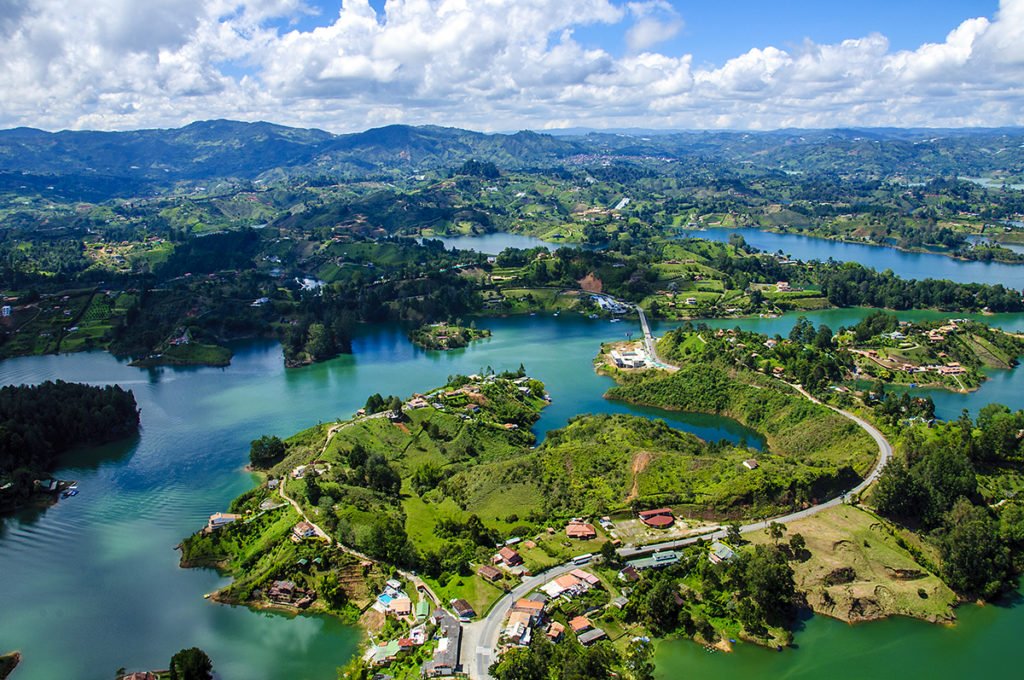
Colombia, a vibrant and diverse country nestled in the heart of South America, has become an increasingly popular travel destination over the years. With its stunning landscapes, rich history, and warm hospitality, Colombia offers a remarkable experience for every traveler. In this blog, we will explore the top five destinations to visit in Colombia in 2024, each offering its own unique charm and allure. So pack your bags, grab your camera, and get ready to embark on an unforgettable adventure!
1. Cartagena - The Jewel of the Caribbean: Cartagena, a city bathed in colonial charm and coastal beauty, tops our list. Explore the cobblestone streets of the walled city, where colorful facades and bougainvillea-draped balconies create a picturesque atmosphere. Immerse yourself in the city's history as you visit the Castillo de San Felipe de Barajas, a fortress with breathtaking views of the Caribbean Sea. Don't forget to indulge in the local cuisine and dance to the rhythm of traditional music in the lively plazas.
2. Medellín - The City of Eternal Spring: Known as the "City of Eternal Spring," Medellín boasts a perfect climate, lush landscapes, and a vibrant cultural scene. Take a cable car ride up to Parque Arví for panoramic views of the city nestled amidst mountains. Explore the innovative urban transformation at Comuna 13 and admire the vibrant street art that tells the story of its resilience. Don't miss the opportunity to attend the famous Feria de las Flores, a colorful festival celebrating Medellín's flower heritage.
3. Tayrona National Natural Park - Nature's Paradise: For nature lovers and adventure seekers, Tayrona National Natural Park is a must-visit destination. Located along the Caribbean coast, this biodiverse reserve is home to pristine beaches, dense jungles, and ancient archaeological sites. Trek through lush trails, swim in crystal-clear waters, and camp under the stars. Disconnect from the world as you immerse yourself in the raw beauty of Mother Nature.
4. Bogotá - The Capital of Culture: As the beating heart of Colombia, Bogotá offers a captivating blend of history, art, and modernity. Start your journey at the historic La Candelaria neighborhood, where narrow streets are lined with colonial houses and vibrant street art. Explore the Gold Museum, home to one of the most extensive collections of Pre-Columbian gold artifacts. Discover the city's thriving culinary scene, from traditional Colombian dishes to international fusion cuisine.
5. San Andrés and Providencia - Caribbean Paradise: No list of top Colombian destinations would be complete without mentioning the stunning archipelago of San Andrés and Providencia. With its turquoise waters, white sandy beaches, and vibrant coral reefs, this Caribbean paradise is a haven for beach lovers and water sports enthusiasts. Explore the underwater wonderland while snorkeling or diving, relax on pristine beaches, and immerse yourself in the unique Afro-Caribbean culture that thrives in this region.
Colombia, a country brimming with natural beauty, cultural richness, and warm-hearted people, offers an array of unforgettable experiences for travelers in 2024. Whether you choose to explore the colonial charm of Cartagena, embrace the vibrant culture of Medellín, or bask in the natural splendor of Tayrona National Natural Park, Colombia promises to leave you spellbound. So, make Colombia your next travel destination and create memories that will last a lifetime. Happy travels!
Activexpedition
Related tours: Colombia
Experiencing the Wonders of the Galapagos Islands: A Multisport Adventure with Activexpedition
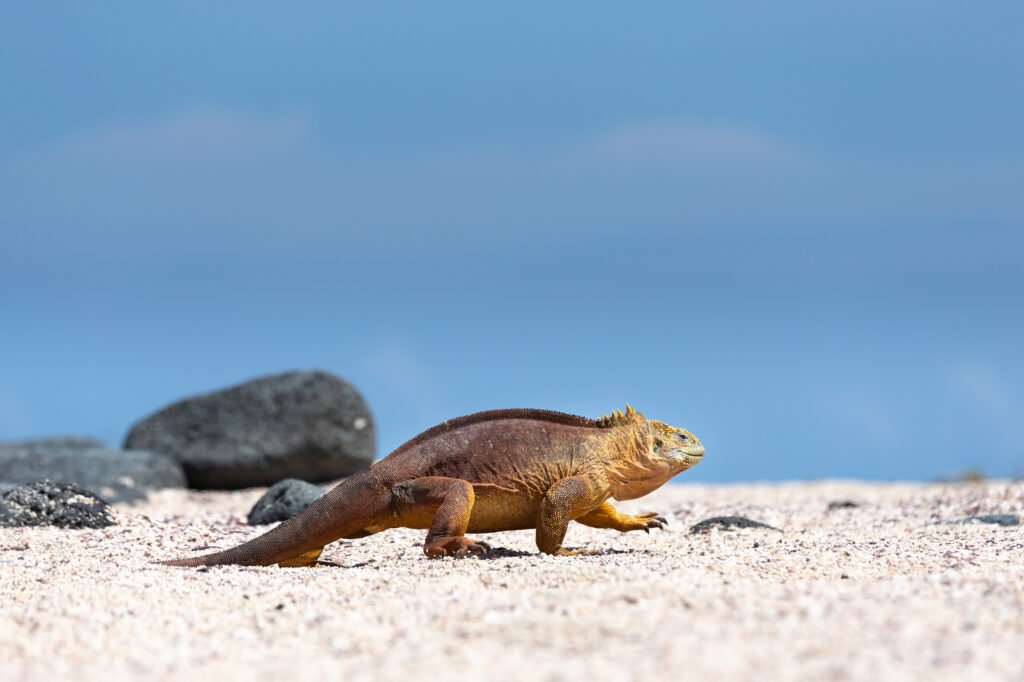
Welcome to the enchanting world of the Galápagos Islands, a place where nature is seemingly untouched by time. If you’re an adventurous traveler seeking a unique experience, look no further than a multisport tour with Activexpedition. Get ready to dive into crystal-clear waters, cycle through volcanic landscapes, explore hidden coves by kayak, hike along breathtaking trails, and snorkel alongside magnificent marine life. Join us on this unforgettable journey as we delve into the thrilling activities that await you in the Galápagos Islands.
Diving in the Depths: The Galápagos Islands offer an extraordinary underwater paradise for diving enthusiasts. Dive into the depths of the Pacific Ocean and discover a thriving marine ecosystem. Swim alongside sea turtles, playful sea lions, and schools of tropical fish. Marvel at the impressive variety of coral formations, as well as the occasional encounter with hammerhead sharks and manta rays. With Activexpedition, you'll have the opportunity to explore the top diving sites, guided by experienced instructors who prioritize safety and conservation.
Biking Through Volcanic Landscapes: Embark on an exhilarating biking adventure through the Galápagos Islands' diverse landscapes. Pedal your way through ancient lava fields, untouched by human interference. Take in the awe-inspiring views of volcanic craters, lush highlands, and pristine beaches. Immerse yourself in the unique flora and fauna that call this extraordinary archipelago home. Activexpedition provides top-notch bikes and knowledgeable guides who will lead you on an unforgettable journey through the islands.
Kayaking in Secluded Coves: Nothing compares to the serenity of gliding through calm waters, surrounded by the breathtaking beauty of the Galápagos Islands. Hop into a kayak and explore hidden coves and secluded beaches that are only accessible by water. Paddle through mangrove forests, keeping an eye out for marine iguanas basking in the sun and playful dolphins leaping through the waves. Activexpedition's expert guides will ensure you experience the magic of the islands while respecting the fragile ecosystem.
Hiking Along Breathtaking Trails: Strap on your hiking boots and get ready to traverse the Galápagos Islands' captivating landscapes. Venture along well-maintained trails, taking in the stunning vistas of volcanic peaks, lush greenery, and dramatic coastlines. As you hike, you'll encounter a remarkable array of wildlife, including giant tortoises, blue-footed boobies, and Galápagos penguins. Activexpedition's knowledgeable guides will share fascinating insights into the natural history and conservation efforts of the islands.
Snorkeling with Marine Marvels: Immerse yourself in the vibrant underwater world of the Galápagos Islands through snorkeling. Dive into crystal-clear waters and witness the kaleidoscope of colors beneath the surface. Swim alongside graceful sea turtles, playful sea lions, and schools of tropical fish that call these waters home. Activexpedition ensures that you snorkel in prime locations, allowing you to observe the incredible biodiversity of this UNESCO World Heritage site.
Embarking on a multisport tour with Activexpedition in the Galápagos Islands promises an adventure of a lifetime. Dive into the depths, bike through volcanic landscapes, kayak in hidden coves, hike along breathtaking trails, and snorkel with mesmerizing marine life. As you explore this unique archipelago, you’ll not only create incredible memories but also develop a deep appreciation for the fragile ecology and conservation efforts in place. Prepare to be captivated by the wonders of the Galápagos Islands and let Activexpedition guide you on an unforgettable journey into nature’s paradise.
Activexpedition
Related tours: Galapagos Islands
Conquering the Mighty Amazon: A Kayaking Adventure with Activexpedition

Welcome to an exhilarating journey deep into the heart of the Amazon rainforest in Ecuador. Get ready to immerse yourself in the raw beauty of nature as we embark on a thrilling kayaking expedition with Activexpedition. In this blog, we will explore the wonders of kayaking in the Amazon, discover the unique flora and fauna that call this region home, and witness the incredible cultural heritage of the indigenous communities that reside along the riverbanks.
1. Unveiling the Amazon's Ecological Marvels: The Amazon rainforest is home to unparalleled biodiversity, and kayaking offers a truly immersive experience to witness this firsthand. Paddle through the calm waters as you observe colorful macaws soaring above, playful river dolphins swimming alongside, and majestic jaguars stealthily lurking in the dense foliage. Our expert guides from Activexpedition will provide fascinating insights into the intricate web of life that thrives in this mesmerizing ecosystem.

2. Navigating the Challenging Rapids: For the adventure seekers, the Amazon offers exhilarating rapids that will get your adrenaline pumping. Test your kayaking skills as you navigate through the twists and turns of the river, tackling Class III and IV rapids that provide an unforgettable rush. Activexpedition's experienced guides will ensure your safety while pushing your limits, making this an adventure of a lifetime.
3. Exploring Hidden Lagoons and Remote Tributaries: One of the most captivating aspects of kayaking in the Amazon is the ability to access areas that are otherwise inaccessible. Venture into hidden lagoons and meander through remote tributaries, where you will encounter breathtaking landscapes and encounter wildlife up close. Immerse yourself in the serenity of these untouched corners of the rainforest, far away from the hustle and bustle of civilization.

4. Cultural Encounters with Indigenous Communities: The Amazon is not only a haven for wildlife but also home to vibrant indigenous communities with rich cultural traditions. During your kayaking expedition with Activexpedition, you will have the opportunity to interact with these communities, learn about their ancient customs, and gain insight into their harmonious relationship with the natural world. Participate in traditional rituals, taste authentic cuisine, and be inspired by their profound wisdom.
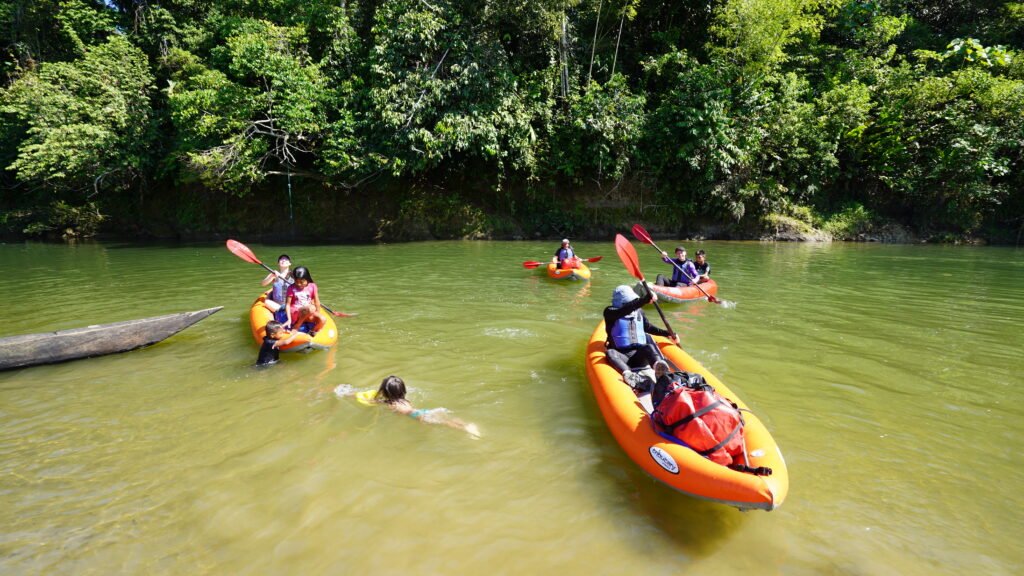
5. Responsible Tourism and Conservation Efforts: At Activexpedition, we prioritize sustainable tourism and actively contribute to the preservation of the Amazon rainforest. Learn about our commitment to eco-friendly practices, such as minimizing our environmental impact, supporting local initiatives, and educating visitors on the importance of conservation. By choosing Activexpedition, you become a responsible traveler and contribute to the preservation of this invaluable ecosystem.
Embarking on a kayaking adventure in the Amazon with Activexpedition is an experience that words cannot fully capture. It is a journey of self-discovery, an immersion into the awe-inspiring power of nature, and a chance to connect with indigenous cultures. So, grab your paddle, embark on an adventure of a lifetime, and let Activexpedition guide you through the untamed beauty of the Ecuadorian Amazon
Activexpedition



